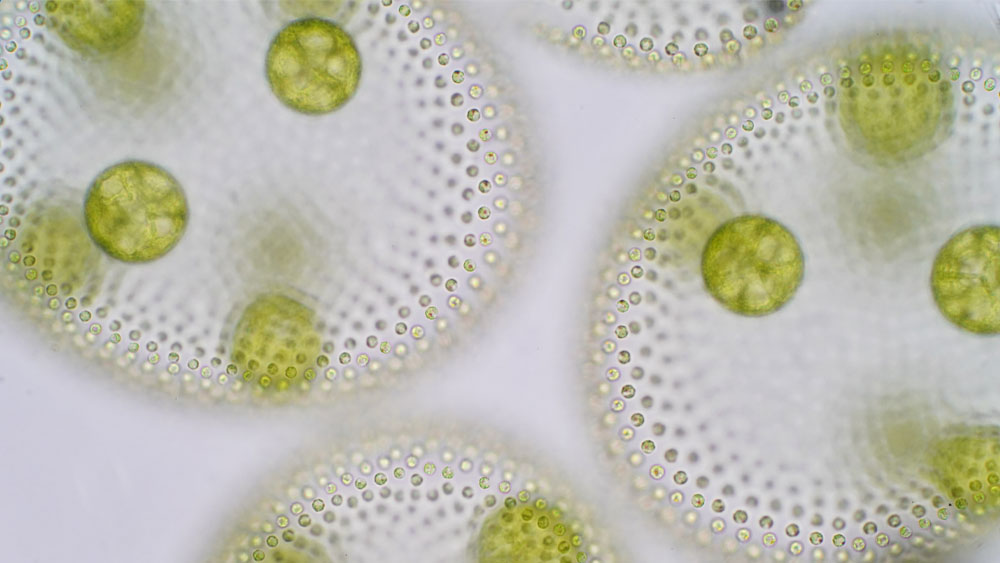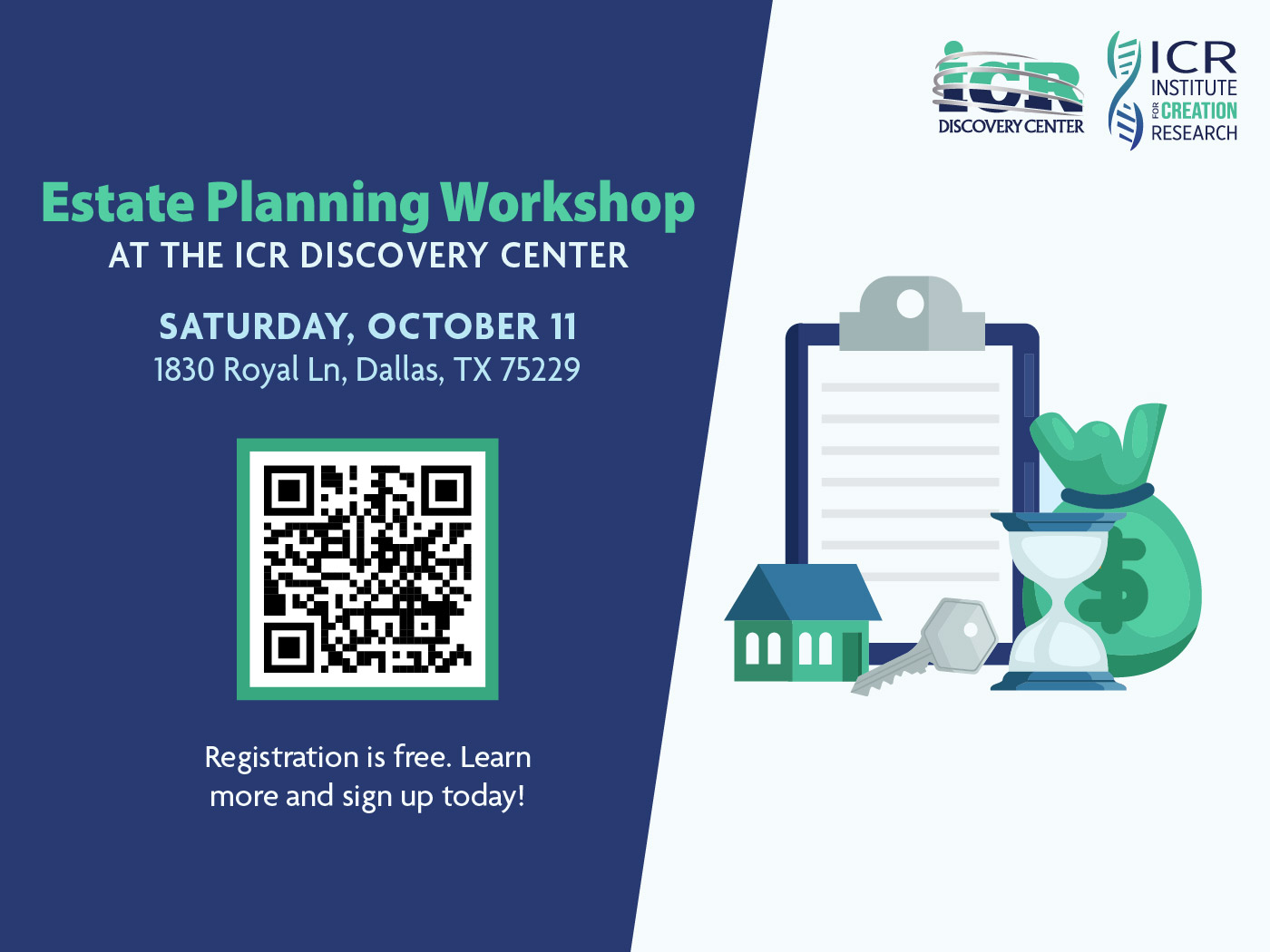
Microscopic Ingenuity: Stentor and the Case for Intelligent Design
by Jonathan K. Corrado, Ph.D., P. E. | Oct. 9, 2025
What if the smallest creatures held the biggest clues to life’s design? A 2025 study in Nature Physics investigates the remarkable behaviors of Stentor coeruleus, a trumpet-shaped unicellular protist. Though it has only one cell, Stentor shows traits that match the complexity of multicellular life. These findings support the biblical view of intentional design and reveal the Creator’s wisdom at the tiniest scale.1,2
One of the most striking features is its use of cilia—tiny hairs that beat in rhythm to create feeding currents. These currents pull in microorganisms and guide them toward the cell’s mouth-like opening. This well-designed feeding strategy becomes even more remarkable when individual Stentor cells form colonies where cells work together in sync.2
In colonies, cells match their cilia movements through fluid interactions that boost feeding flow. Scientists have identified a behavior called promiscuity, in which individual members of the colony change positions with their neighbors to improve nutrient intake.2,3 This setup breaks apart when food runs low, showing how Stentor can adjust to changing conditions. Such smart responses point to planning and purpose, not chance.
These behaviors have drawn attention from evolutionary theorists, some of whom suggest that physical forces like fluid flow may have helped life become multicellular.1 But the traits seen in Stentor are not halfway steps; they are complete and functional. Shekhar et al. found that Stentor colonies act like multicellular systems, yet the cells stay genetically separate.2 This challenges the idea that such behavior leads to multicellularity and shows that even single cells can be packed with purpose—just as the Bible describes. Life was fully formed from the start.
When damaged, Stentor coeruleus can rebuild into a full, working cell. This process follows a step-by-step genetic program, with certain genes turning on in order to guide the rebuild. The accuracy of this process—organized and complete—points to a built-in plan, not random repair. Such complexity in a single cell reflects the work of a Creator who designs with intentional care.
All these traits—feeding coordination, colony coordination, and regeneration—tell a bigger story. Stentor coeruleus doesn’t just survive; it thrives through systems that show cooperation, strength, and planning. These are signs of the Creator’s handiwork. Even at the smallest level, God’s fingerprints are clear. The movement of cilia, the teamwork in colonies, and the rebuilding of cells all point to design—not chance, but craftsmanship. They reveal the greatness of the Creator, whose wisdom reaches every part of His creation.
References
- Marine Biological Laboratory. ‘She Loves Me, She Loves Me Not’: Physical Forces Encouraged Evolution of Multicellular Life, Scientists Propose. Phys.org. Posted to phys.org March 31, 2025, accessed August 1, 2025.
- Shekhar, S. et al. 2025. Cooperative Hydrodynamics Accompany Multicellular-Like Colonial Organization in the Unicellular Ciliate Stentor. Nature Physics. 21: 624–631.
- Ratcliff, W. et al. 2025. Genome Duplication in a Long-Term Multicellularity Evolution Experiment. Nature. 639: 691–699.
* Dr. Corrado earned a Ph.D. in systems engineering from Colorado State University and a Th.M. from Liberty University. He is a freelance contributor to ICR’s Creation Science Update, works in the nuclear industry, and is a Captain in the U.S. Navy Reserve.
Early Fish Evolution?

The discovery of a new species of a plant or animal would probably not spark much excitement to the non-scientist. But in this case, the conditions surrounding the discovery of two new species of little-known fish should cause Christians who are interested in origins to take notice.
More...Make Plans to Attend Our Estate Planning Workshop at the Discovery Center!
 Did you know that up to 75% of Americans over 18 have no retirement or estate plans? Don’t wait to prepare for the future. Join us on Saturday, October 11, from 8:00 a.m. to 1:00 p.m. at the ICR Discovery Center for a special estate planning workshop.
Did you know that up to 75% of Americans over 18 have no retirement or estate plans? Don’t wait to prepare for the future. Join us on Saturday, October 11, from 8:00 a.m. to 1:00 p.m. at the ICR Discovery Center for a special estate planning workshop.Enjoy a complimentary breakfast while Mr. Don Totusek, Mr. Dan Farell, and Mrs. Regina Krieg share practical insight to help you create a plan that protects your family and legacy.
Leave with the confidence and clarity to steward your resources wisely, for today and eternity. There is still time! More...
Fossil Confusion in Ethiopia: Are Evolutionary Trees Built on Toothpicks?

A new study published in Nature describes the discovery of 13 fossilized teeth from the Ledi-Geraru site in Ethiopia. They have been dated to between 2.6 and 2.8 million years ago and are attributed to two distinct hominin species: early Homo and a newly identified Australopithecus relative.1 The researchers argue that this find supports a “bushy tree” model of human evolution, where multiple species lived side by side rather than evolving from one to another in a straight line. While this may sound like progress to evolutionary scientists, it ...More...
The Only Mesozoic Dragonfly in Canada—Is a Dragonfly

In 2023, an undergraduate student from McGill University discovered a new dragonfly species in Alberta, Canada. In fact, “This is the first ever dinosaur-aged dragonfly found in Canada,” said paleontologist Andre Mueller of McGill University.1 Paleontologists are claiming it’s a missing link.
More...More Articles
- Oldest Evidence of Butterflies
- Another Big Mistake in Evolution
- Show Your Love for the ICR Discovery Center on North Texas Giving Day 2025!
- Living Gyroscope in Flies
- Turning Point Founder Charlie Kirk Is Now with the Lord
- Deliverance from Fear
- Project Artifact: The Spear
- Flood Tsunamis Transported Trees and Amber
- Secular Paper Admits ''Unreasonable Likelihood'' of Abiogenesis
- September 2025 ICR Wallpaper
- Happy Labor Day 2025
- ICR Research Showcased at 2025 CRS Meeting
- Sedimentary Rock Does Form Fast!
- Man of Science, Man of God: Johannes Kepler



